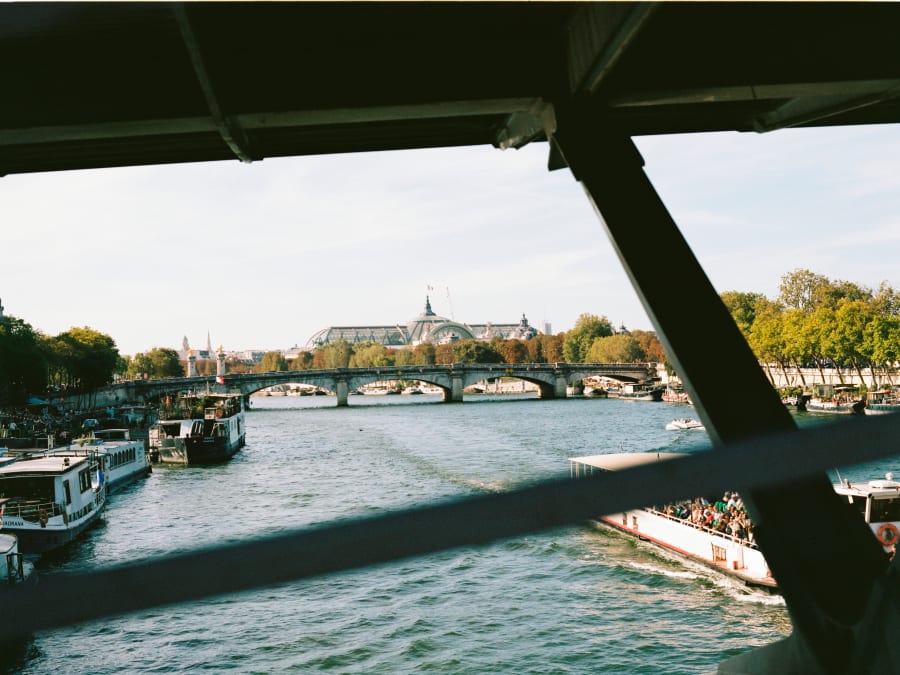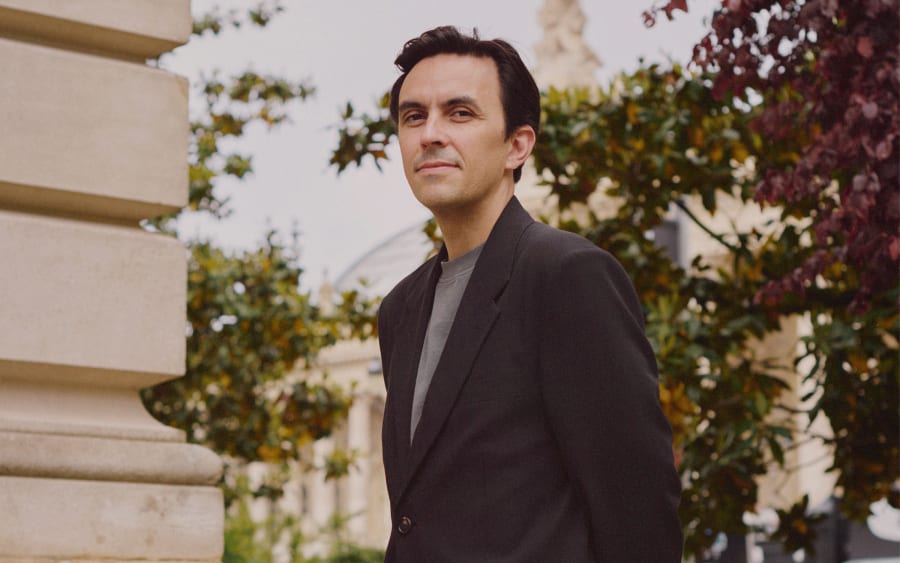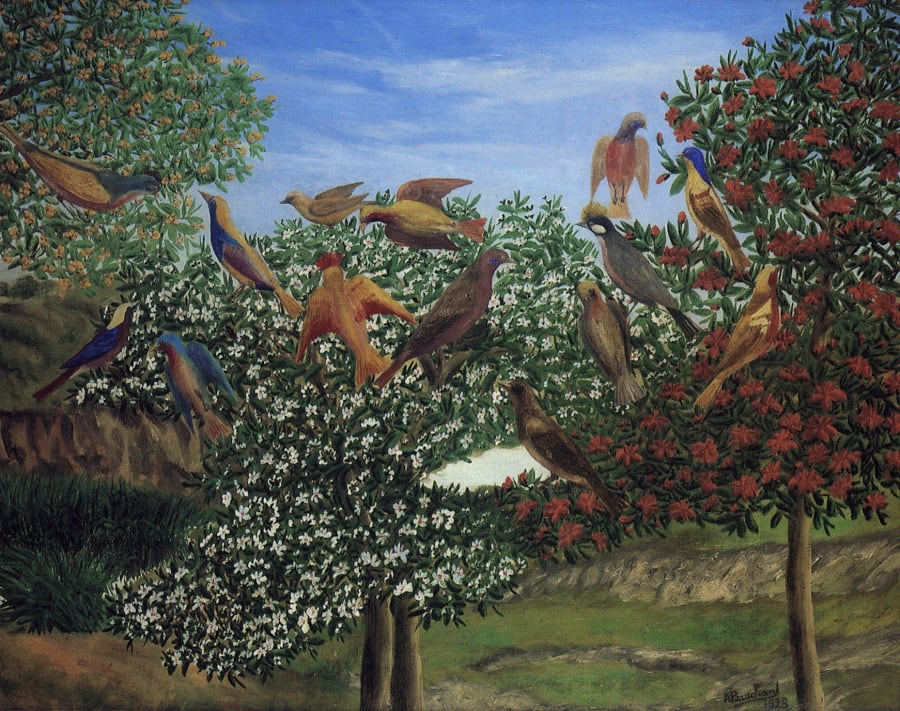David Lebovitz (chef and cookbook author)
What is your first memory of Paris?
My first impression was coming out of the train station, and marveling at how beautiful everything was. I’d spent the year after college backpacking around Europe, but emerging from the Gare de l’Est, I remember how remarkable Paris looked. I was also enthralled by all the bakeries, which were on every street corner and the amazing chocolate shops too. It’s funny, because back then, I never imagined I’d be living here…but here I am!
What is your favorite breakfast place?
My favorite place for breakfast is in our backyard, with my partner Romain. In summer, it’s perfect under the fig tree, which not only provides a lot of shade, but also an abundance of fresh, plump figs, which I use to make jam for many of our breakfasts.
If I go out, I like to stop in at Café Méricourt, which does excellent coffee and a delicious shakshuka, a North African dish of eggs baked in spiced tomato sauce. (There’s also a green version with lots of vegetables.) Another favorite spot is Chambelland, a gluten-free bakery which has the most delicious individual loaves of bread, called ‘Chambellines’, my favorite being the sugar-crusted ones with chocolate chips, scented with orange blossom water.
What do you cook when you have guests visiting Paris?
I always make a grand aïoli platter. Most visitors eat their meals in restaurants, which is fun, but many people start missing vegetables and salads, so I’ll pick up a nice assortment of vegetables at Terroirs d’Avenir, which has especially beautiful produce, such as radishes, potatoes, green beans, cherry tomatoes, and perhaps some fennel. I’ll slice them into crunchy crescents and arrange them on a big platter. I’ll add some hard-boiled farm eggs to serve with anchovies and cracked black pepper, and whip up a batch of aïoli in my pestle and mortar, for folks to dip everything into. If I think people might want something a little more substantial, I’ll pick up a poulet rôti at my local butcher and serve that as well. Even though it’s untraditional to serve roast chicken with a grand aïoli, no one seems to mind – especially if there’s plenty of rosé to wash it all down.
What is your best advice for someone visiting the city?
Stay in the same neighborhood and go back to the same places. Unlike other cities, Paris is essentially a collection of villages with each neighborhood having its own personality and distinct charm. Parisians have a somewhat earned reputation for not putting up with things (or people) they’re not familiar with, so the first time you go into a cheese shop, café, or restaurant, the welcome will be more formal, and a little perfunctory. But if you go back, they’ll remember you, and you’ll get recognized as a ‘regular’, and if you show interest in what they’re selling, at a fromagerie or chocolate shop, they’ll spend more time with you.
If you want a slice of everyday Parisian life, check out neighborhoods like the 9th or the 11th arrondissements. The Thursday and Sunday markets at the Bastille (in the 11th), or the Marché d’Aligre (in the 12th) are both favorites of mine.
Gisela McDaniel (artist)
What work of art best represents Paris?
I’ve been loving exploring smaller galleries, walking the streets, and making my way to and around the Pompidou. Experiencing Niki de Saint Phalle’s fountain [Jean Tinguely and Niki de Saint Phalle, Fontaine Stravinsky, 1983] outside the museum was a particular treat. She will always be a favorite of mine; her work gives me a sense of finding joy in darkness and processing difficult times through the act of making.
I was also moved by exhibitions at the Palais de Tokyo, especially those highlighting past and present protests as statements of resistance to oppression. They feel especially relevant locally and globally.
What does the word ‘Paris’ evoke for you?
When I think of Paris, I think of the birth of ‘primitivism’ and its connections to the colonization of the Pacific, including repression in Kanaky (New Caledonia). I reflect on the histories the streets and museums hold, and how those who walked them and contributed to them have influenced art history. I also contemplate how stolen objects impacted on the history of the city and France as a nation. Those asymmetric exchanges between places and people, cultural objects and practices, consensual and otherwise, leave powerful traces of resistance and testimonies of survival.
What can you only do in Paris?
Experience something of the city that shaped Gauguin’s aesthetic sensibility and, in turn, cast my own critical, contemporary gaze and appreciation of the people and place as a decolonial act.
Also: eat, drink, shop, observe, museum wander, smell the flowers, have a gluten-free-baguette break, laugh with friends, dance by the river – all in one night!
Where do you find inspiration in Paris?
The fluid, frenetic combination of people and places surprises and delights me. It’s been such a pleasure to have people sit for paintings and interview them about their lives. It’s a very intimate and special way to get to know the city as it exists in the present, as well as through its residents. In other words, people’s hearts: what matters to them, what makes them angry, what makes them laugh, who they are. All these people are part of the puzzle that makes up Paris right now. And the museums, which I am still getting to know, have been fabulous and endlessly inspiring.
Peter Freeman (gallerist)
What do you miss most when you are far from Paris?
Sitting in the Jardin du Palais-Royal, drinking a coffee, and reading my newspaper – something I liked so much that I found a gallery space in rue de Montpensier at one of the entrances to the garden.
What is the craziest thing you have heard or seen on the streets of Paris?
Probably the Pont Neuf wrapped by Christo in 1985 – 40 years ago already (!), but still fresh and startling and perfect – a true cadeau for the city – and something I remember every time I walk across the bridge.
Who do you think best embodies Paris?
Every Parisian taking their baguette home from the bakery in the morning for their breakfast.
Where do you go for a cultural trip?
The Labrouste reading room at the National Institute of Art History (INHA) – an extraordinary space, now impeccably renovated, and complete with a hidden-in-plain-sight commission by the French artist Dove Allouche.
Justine Durrett (Senior Director, David Zwirner, Paris)
Where do you feel most at home?
I’ve lived in Geneva, New York, and now Paris for the past five years – all great places to call home. I will say that Parisian apartments are the most charming!
What makes a true Parisian?
I have a sunglasses addiction and love the crêpes from Breizh Café…Do I qualify?!
Who do you think painted Paris best?
Manet – not just Paris but the spirit of Parisian life. Un bar aux Folies Bergère (1882) was one of the first paintings I studied and fell in love with in art history class.
Can you reveal to us one of your hidden gems in the city?
The Musée des Arts et Métiers, which is a museum of industrial design, scientific instruments, and inventions. Its collection ranges from early airplanes to printing presses, looms, music boxes, computers, and even an original version of the Foucault Pendulum. The building is a beautiful old abbey in the third arrondissement.
Robbie Fitzpatrick (gallerist)
Where do you go out in Paris?
I usually stick to my neighborhood in Haut-Marais, where an evening out starts with a post-work apéritif on the terrace of a café near the gallery: Café de la Poste, Le Progrès, La Perle, Serpent à Plume, La Chope des Artistes...
Who would be your dream guests for a dinner party?
If my French were to vastly improve and I had a time machine, here’s a short list of a few Parisians I could imagine having an lively dinner party with: Guillaume Apollinaire, Elsa Schiaparelli, Salvador Dalí, Agnès Varda, Georges Méliès, Jacques-Yves Cousteau, Jean Cocteau, Hervé Guibert, Jacques Derrida, Dalida, and L’Inconnue de la Seine.
Where are the best boutiques?
Paris has some of the best vintage shops and many of them are close to the gallery. Some of my favorites are Nice Piece, Gaijin, Pretty Box, Plus que parfait, and Skat Vintage.
What are your favorite museums in Paris?
Musée d’Orsay, Musée Gustave Moreau, and Musée d’Histoire de la Médecine.
Gisela McDaniel is represented by Pilar Corrias (London).
Peter Freeman, Inc., Pilar Corrias, David Zwirner, and Fitzpatrick Gallery will participate in Art Basel Paris 2024. Learn more here.
Caption for header image: The Domaine national du Palais-Royal, Paris, 2024. Photograph by Berat Nalci for Art Basel.
Published on September 18, 2024.


